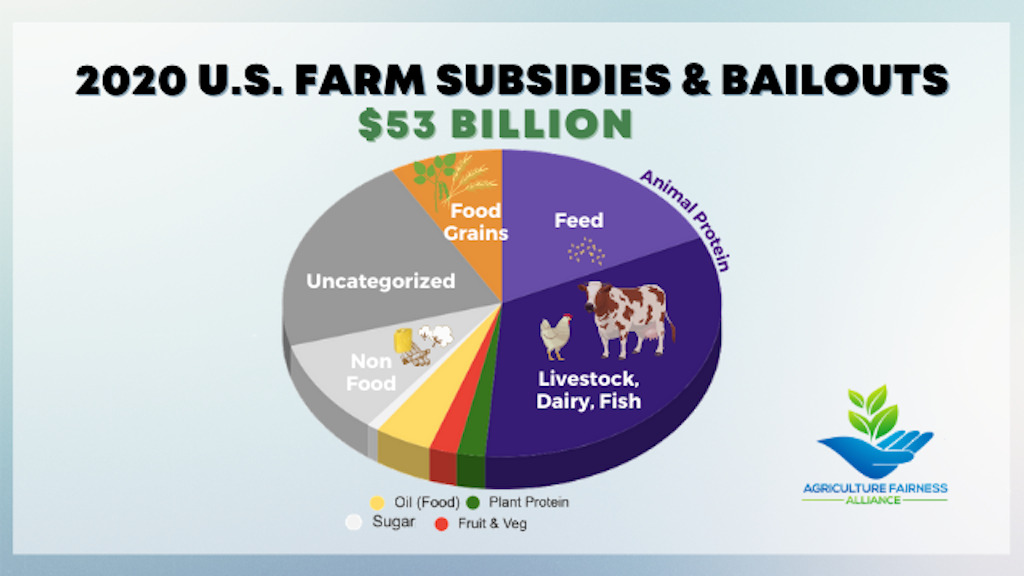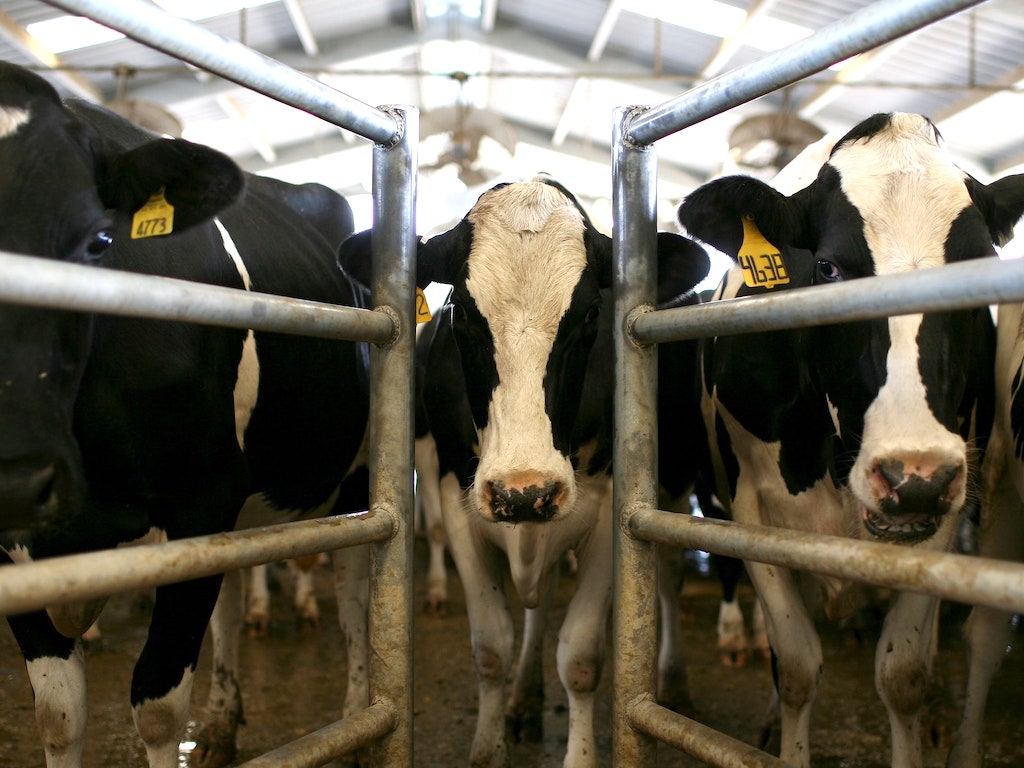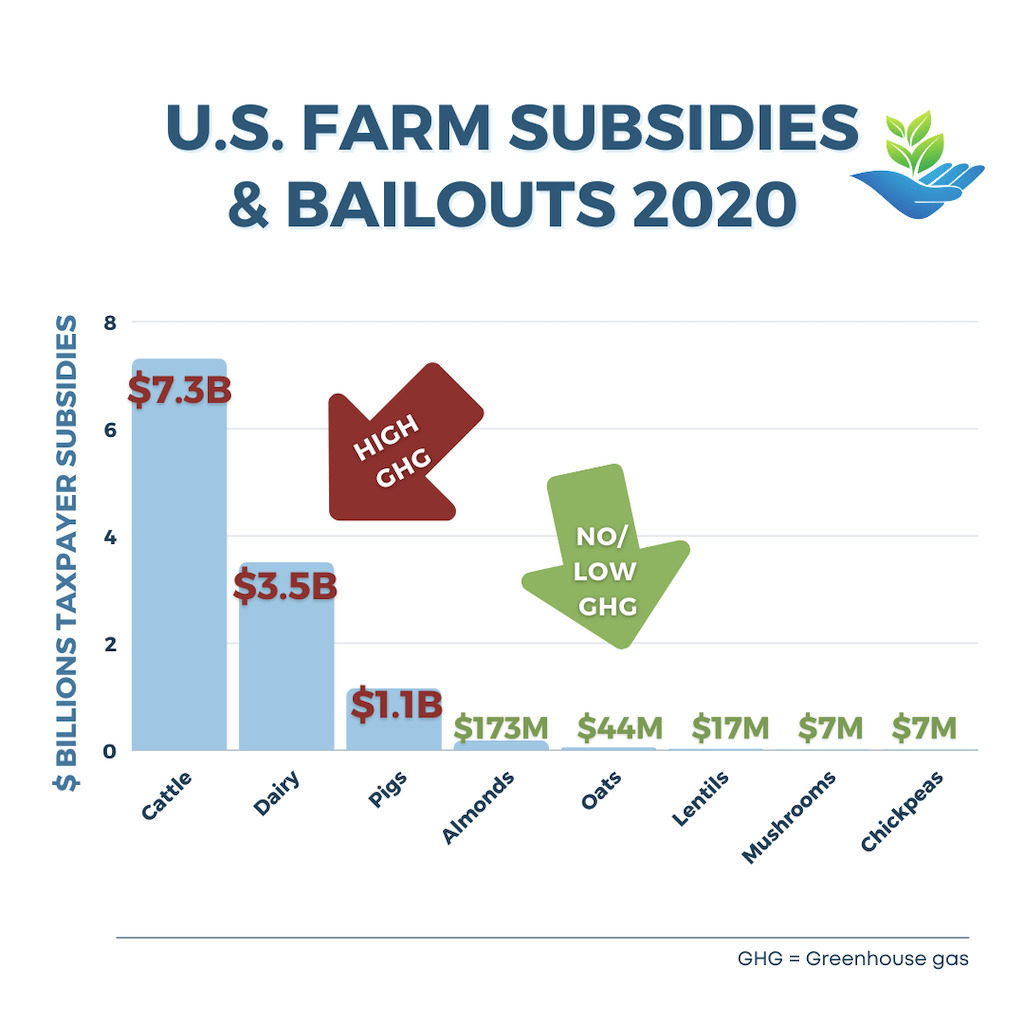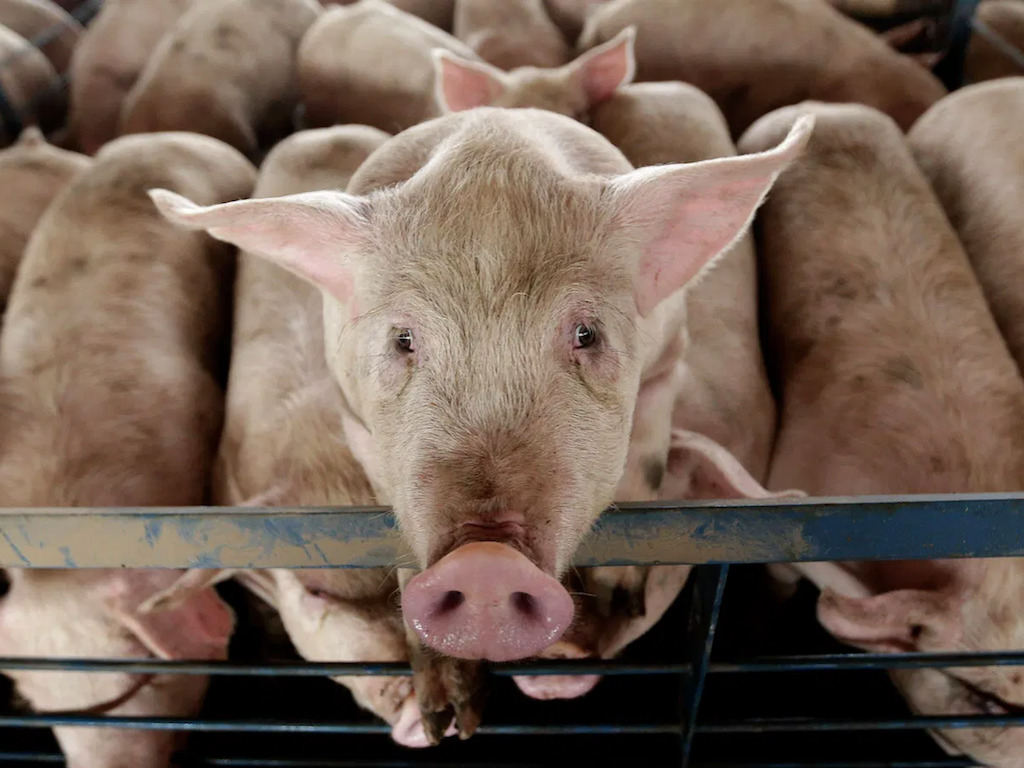4 Mins Read
Farm subsidies and bailouts for animal agriculture companies in the U.S. skyrocketed in 2020 to continue to prop up the carbon-intensive and health damaging industry, new data has revealed. Describing the coronavirus-stricken period as a “blowout year” for the sector, sustainable farm policy nonprofit Agriculture Fairness Alliance (AFA) are calling for American tax dollars to be better spent on accelerating the much-needed transition to a climate-friendly food production.
Rocked by trade wars and the coronavirus pandemic, the number of farm subsidies and bailouts in the U.S. doubled year-on-year from US$20 billion to more than US$50 billion in 2020, according to new data published by the AFA. Of the total, over 60% was pocketed by meat, dairy milk and animal feed production firms, in what the U.S. nonprofit described as a “blowout year” for some of the most “unhealthy and environmentally damaging sectors” in the country.
“Livestock, dairy and animal feed producers received the most subsidies and bailouts. These foods release outsized greenhouse gases, require a lot of land, and provide only a small portion of our nutritional needs,” wrote the AFA in a report. Methane emissions in the U.S. from livestock production are nearly equal to the footprint of the national natural gas industry.

The AFA further noted the negative health impacts associated with animal-based foods, from the strong evidence linking high meat consumption to a plethora of chronic illnesses such as heart disease and various cancers, to fuelling the country’s fibre crisis, with over 95% of Americans failing to meet their daily fibre requirements.
“Yet more than half of subsidies benefited producers of foods that contain zero fibre.”
Epidemiologists and scientific experts at the U.N. have also warned that intensive livestock farming poses one of the biggest threats to the rise of zoonotic pandemics.
Breaking down the farm subsidies, the AFA reported that US$1.2 billion was redirected in 2020 to pig farmers, compared to the tiny fraction of US$7.5 million handed to mushroom producers – despite the fact that both pork and mushroom command a similar market size in the U.S.
If subsidies were allocated based on relative market sizes, mushroom producers should have received eight times more or, conversely, the pork industry should have received eight times less.
AFA

“If subsidies were allocated based on relative market sizes, mushroom producers should have received eight times more or, conversely, the pork industry should have received eight times less,” explained the AFA.
Dairy producers, on the other hand, received US$3.5 billion in 2020 through direct payments, subsidies, and bailouts from the USDA, while plant-based milk producers and crop suppliers such as oat farmers were handed just US$44 million. That equates to around US$80 going to dairy farmers for every US$1 that oat producers received.
What’s it going to take to convince policymakers to stop bailing out a troublesome industry, and start helping producers diversify?
AFA
The coalition, whose allies include sustainable food system nonprofits like Sweet Farm and the Rancher Advocacy Program (RAP), says that the figures show a huge public policy imbalance in supporting firms that do not contribute to a climate-resilient food supply chain, and do not offer the very foods that government nutritional guidelines recommend for a healthy diet.

“What’s it going to take to convince policymakers to stop bailing out a troublesome industry, and start helping producers diversify?” said the AFA, who has publicly called on the USDA and Congress to redirect funds to farmers who do want to make a transition into climate-friendly crops, which would ultimately help the country reduce its emissions and improve public health.
The AFA has also argued for a fairer distribution of subsidies towards alternative protein companies, who have impressively still managed to bring in US$3.1 billion in capital in 2020 globally, despite the lack of public funding.
With the support of government grants to “level the playing field” and accelerate the development and commercialisation of sustainable alternatives for consumers, who are already making a major shift away from animal-based foods. 2020 marked a record year for plant-based foods, with the sector’s U.S. retail sales topping US$7 billion and growing at twice the rate compared to animal product categories.
Lead image courtesy of AP Photo.




